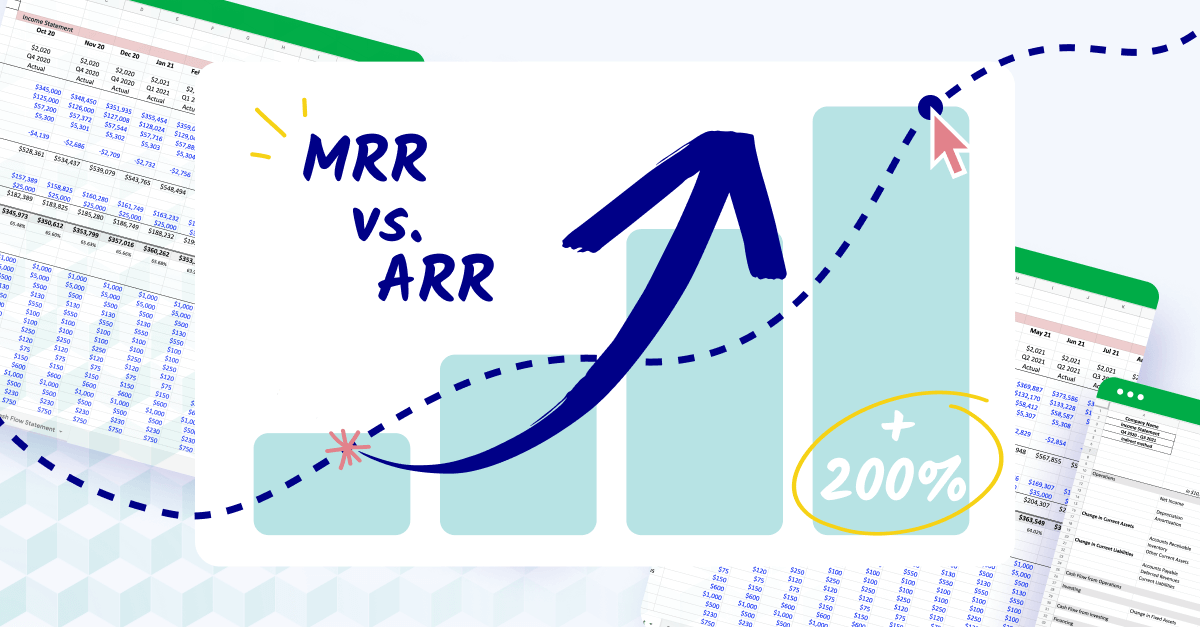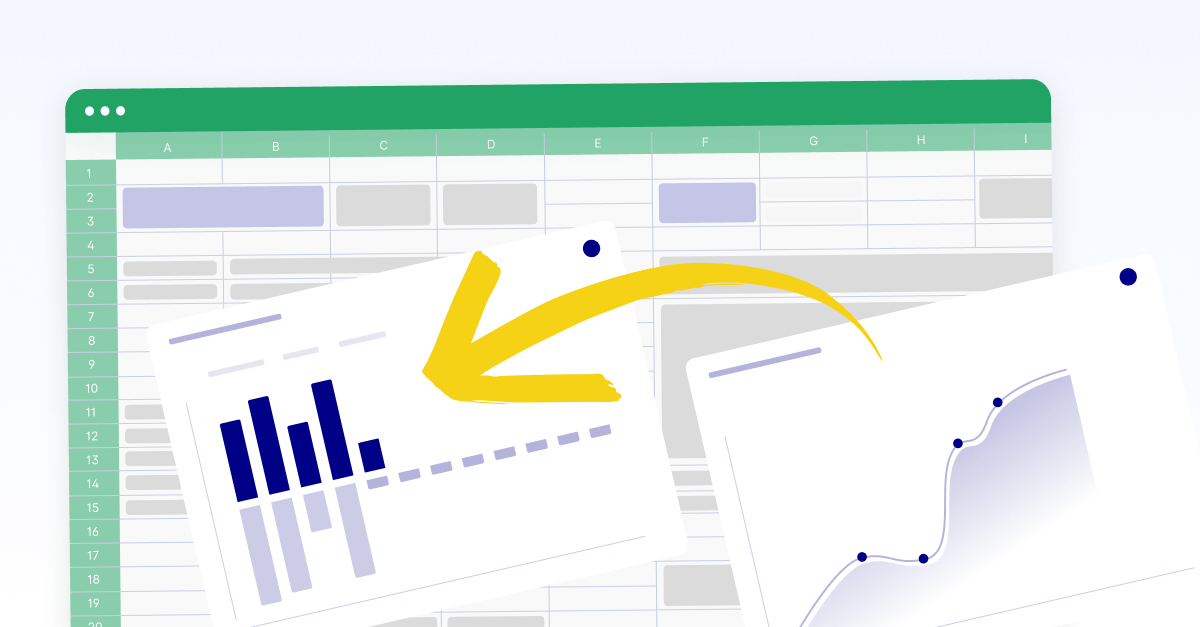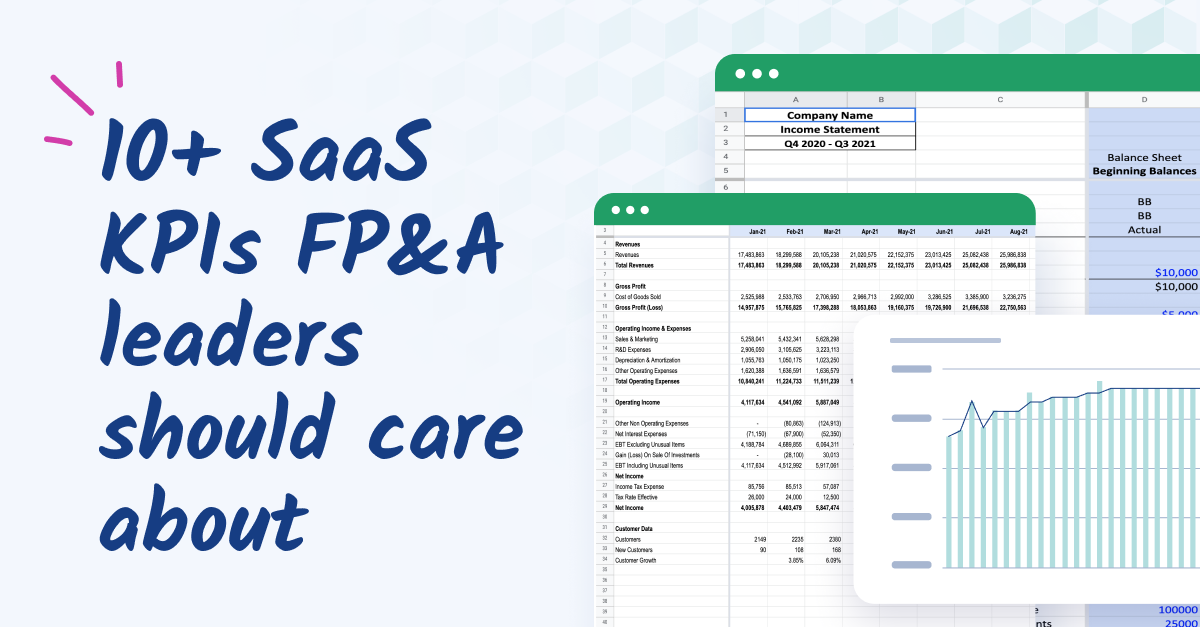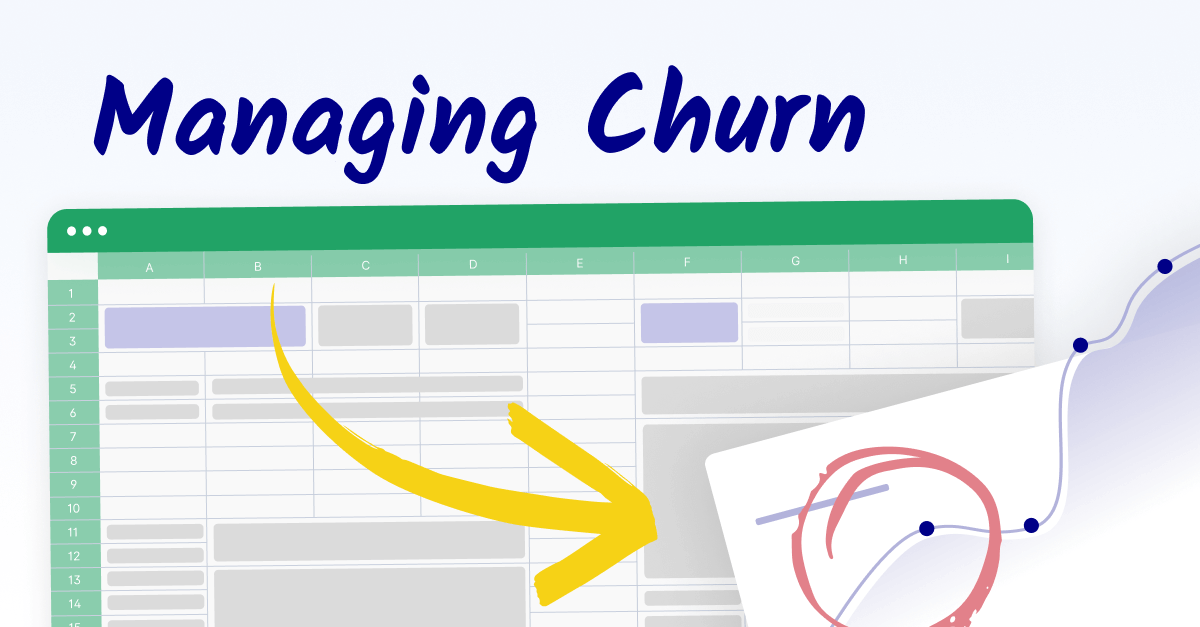What is recurring revenue?
Recurring revenue is income that a company regularly receives.
In many cases, this revenue comes from customer subscriptions or other services that require customers to pay periodically (with annual, quarterly, or monthly subscription fees).
Companies like the recurring revenue model because it’s a predictable form of income.
It typically involves signing customers up for a contract, during which they make regular payments for services such as a software platform.
What is monthly recurring revenue (MRR)?
Monthly recurring revenue (MRR) measures the amount of money a business can expect to receive in a given month from customers who use its services on an ongoing basis.
What is annual recurring revenue (ARR)?
Annual recurring revenue (ARR) is the amount a company can expect to receive consistently from annual contracts.
Can I calculate ARR by multiplying MRR by 12?
Not really. While the logic is that annual revenue is built from the numbers in your monthly revenue, the fluctuations in MRR mean that it’s not a direct correlation.
Changes in MRR from renewals, uplifts, seasonality, churn, and contractions make MRR far more variable than the annual revenue outlook.
The ARR formula offers a simpler way to determine the annual view of recurring revenue.
What types of companies benefit from recurring revenue pricing?
Subscription pricing is often associated with SaaS companies. While this is an accurate association, SaaS isn’t the only place where recurring revenue models thrive.
Here are some business types that establish predictable cash flow through recurring revenue:
Content businesses: Love a Netflix series or a favorite playlist on Spotify? Content businesses are a perfect example of recurring revenue pricing.
They offer access to their content libraries for a standard, recurring fee.
Other content-based companies that use this model include fitness brands that offer subscription access to their live and on-demand exercise classes and professional development brands that offer access to proprietary information and interactive user forums on a monthly or annual billing basis.
Productized services: Service-based businesses such as designers, writers, virtual assistants, or marketers may opt to streamline their offerings into a productized monthly subscription.
For instance, a certain number of articles per month from a copywriter or a set amount of hours and projects from a marketing services provider.
Subscription boxes: Brands like Ipsy, BarkBox, SnackCrate, and Harry’s offer niche subscription services that deliver a direct mail package of consumer products for a set price.
Customers receive an assortment of goods annually, usually built around an interest or theme.
The deliveries continue on a per-month subscription basis until the user cancels.
Types of recurring monthly and annual revenue
A range of customer activities impacts recurring revenue. Segmenting types of revenue can offer deeper insights into your customer base, their motivations, and your potential for future growth.
Let’s look at the types of recurring revenue that occur within a company.
These sources of recurring revenue may be annual or monthly, depending on your business model or specific reporting requirements:
New customers: Revenue from customers who have just signed up for your service.
Renewals from current customers: Revenue from existing customers at the same price plan.
Upgrades from current customers (Expansion): New revenue from expanding services from existing customers, such as customers graduating to a higher price tier or enterprise-level service. Expansion revenue gets counted in a business's NDR (net dollar retention), one of the north-star metrics for SaaS companies.
Lost from downgrades from current customers (Contraction): Loss of recurring revenue from customers moving to a lower-priced plan or less-expensive tier.
Lost from canceled customers (Churn): Loss of revenue when customers discontinue using your service.

Why are MRR and ARR important SaaS metrics?
Recurring revenue is the lifeblood of a subscription-based business.
If you can’t gain and keep customers—if you're experiencing revenue churn—you’ll soon experience issues turning a profit and keeping operations moving.
Tracking MRR and ARR helps your company to plan its future with a high-level view of the money coming into the business:
Examine subscription trends
MRR offers insight into seasonality and acquisition trends for your monthly subscriptions.
Analyzing this data informs promotional and marketing activities, pricing discussions, feature roadmaps, and more.
Understand Churn
Do customers drop off during specific time windows or after a predictable length of service?
Examining MRR for churn patterns can surface essential data about the customers that leave your business.
This can help you close gaps in your service or improve customer experience.
Support Sales
MRR and ARR offer high-level information on sales team performance.
MRR provides data for creating more accurate forecasts, sales plans, and promotions.
Budget cash
Recurring revenue provides a solid basis for budgeting future hiring, improvements, and growth investment.
By monitoring monthly and annual revenue, Finance has a stronger basis for allocating funds.
Promote growth
Growth relies on cash and planning.
A clear view of your annual revenue gives Finance vital data for supporting growth and scaling operations.
Attract investment
SaaS businesses often look for streams of investment capital or potential strategic partners to support continued growth.
A track record of solid monthly or annual recurring revenue growth demonstrates that the company is a sound financial bet.
This makes it more attractive to potential investors or merger and acquisition (M&A) activity.

How to calculate monthly recurring revenue (MRR)
To find your MRR, multiply your product’s total monthly subscribers by your average revenue (the average of your subscription rate or tiers) per user.
How to calculate annual recurring revenue (ARR)
To find your annual recurring revenue, take the total subscription revenue for the year + recurring revenue from add-ons and upgrades.
Then, subtract revenue lost from cancellations and downgrades that year.
How to choose between MRR or ARR?
While MRR and ARR offer plenty of context for your revenue operations, businesses will most likely choose one of these metrics to track their success and growth.
Which metric makes the most sense for your company? To find out, you’ll need to answer a few questions:
How long do your customers sign up for your service?
If your minimum contract term is a month, MRR might be the way to go.
ARR makes the most sense if your company only offers annual or multi-year contracts.
Is your pricing model straightforward or more complex?
Simple tiers and monthly pricing options make more sense for MRR measurement.
However, if you offer custom pricing or enterprise plans, ARR might simplify reporting more effectively.
How big is your business?
Small businesses typically trend toward reporting MRR.
Most enterprise SaaS companies deal in larger pricing or higher volume, so they'll often opt to report ARR.
Who are you calculating this data for?
Audience matters when it comes to revenue.
Annual recurring revenue may be the more attractive for businesses looking to demonstrate value to investors.
What's the reason for calculating revenue?
If you’re trying to plan for short-term goals, get context seasonality, or see the results of a recent pricing or feature change, MRR is the way to go.
For gaining a broader perspective on company performance, growth, or size, consider ARR.

How to grow recurring subscription revenue
The growth of your recurring revenue business model is about getting new customers in the door, keeping your current customers happy and supported, and ensuring your pricing is in line with current market expectations and economic factors.
Try these seven strategies to build your recurring revenue over time.
1. Raise subscription rates
While you should use caution when roof-testing your pricing, adjusting the cost of your product for new customers is one of the fastest ways to increase recurring revenue.
For existing customers, scheduling uplifts at renewal can bolster revenue over time.
2. Create pricing tiers
For software with a range of functionality, consider building pricing tiers to differentiate price points.
Tiered pricing allows a lower entry point for new customers while offering customized functionality to meet diverse customer needs.
3. Drive adoption
Work to expand market share through advertising, inbound marketing, and other acquisition tactics.
Acquiring new customers also buffers the churn that’s a part of every subscription business.
4. Promote expansion
Give customers a reason to invest more in your product.
This is accomplished through expanded features, value-added services, increased usage or license seats, etc.
5. Boost retention
If customer acquisition is one side of the revenue coin, retention is the other. Invest in feature upgrades and customer success activities that encourage your long-term users to stay.
Create opportunities to build loyalty in your marketing, product offering, and customer service.
6. Use win-back strategies
You have some options if your customer base contracts due to service issues or interruptions.
Discounts, bonus services, or other value-adds give customers a reason to take a second chance on your service.
7. Reduce customer acquisition costs (CAC)
Gaining new customers is costly, and the expense cuts into your recurring revenue. Find ways to reduce the price of acquiring new customers.
The result will be higher recurring revenue and more value for each customer you onboard.
Conclusion: forecast recurring revenue and churn with Cube
Now you know everything you need to know about MRR vs. ARR.
You know how to track your recurring revenue.
You know all about how to reduce churn and grow your NDR.
But do you know about Cube?
Cube makes monitoring your monthly or annual revenue easier by offering powerful, cloud-based FP&A features in Excel.
Click the image below to request a free demo of Cube to learn more about taking your revenue reporting (and all your FP&A tasks) to the next level.



.png)










